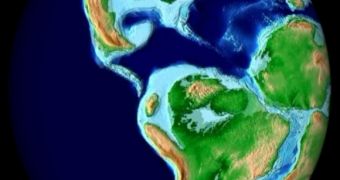A recent study performed by a team of geochemists from the UCLA managed to thwart the previously long-held conceptions of the experts, by showing that in fact, the tectonic motion of the Earth's plates began about a billion years before formerly believed. This also changes the envisioned image of a dry, barren and lifeless planet completely. The study involved thorough observations of zircons (ancient mineral grains about twice as thick as human hairs) by means of a powerful and accurate device.
As the Earth is known to be 4.5 billion years old, some theories related to the plate tectonics indicated that the process had started when it was a billion years of age, pushing the event to even more recent periods. But zircons studied with UCLA's high-resolution ion microprobe were showing some intriguing characteristics that could not be ignored, including their age, determined to be of 4 billion years and that they had formed in an area with a much lower heat flow than the global average of the time.
"The global average heat flow in the Earth's first 500 million years was thought to be about 200 to 300 milliwatts per meter squared," said Michelle Hopkins, a fellow study author, graduate student in Earth and space sciences at UCLA, as quoted by Eurekalert. "Our zircons are indicating a heat flow of just 75 milliwatts per meter squared - the figure one would expect to find in subduction zones, where two plates converge, with one moving underneath the other. The data we are reporting are from zircons from between 4 billion and 4.2 billion years ago," explained Mark Harrison, director of the Institute of Geophysics and Planetary Physics at UCLA.
"We have assessed dozens of scenarios trying to imagine how to create magmas in a heat flow as low as we have found without plate tectonics, and nothing works; none of them explain the chemistry of the inclusions or the low melting temperature of the granites. You don't have plate tectonics on a dry planet," added the scientist. "Plate tectonics was inevitable, life was inevitable. In the early Earth, there appear to have been oceans; there could have been life - completely contradictory to the cartoonish story we had been telling ourselves."
"We're revealing a new picture of what the early Earth might have looked like," shared Hopkins. "In high school, we are taught to see the Earth as a red, hellish, molten-lava Earth. Now we're seeing a new picture, more like today, with continents, water, blue sky, blue ocean, much earlier than we thought."

 14 DAY TRIAL //
14 DAY TRIAL //